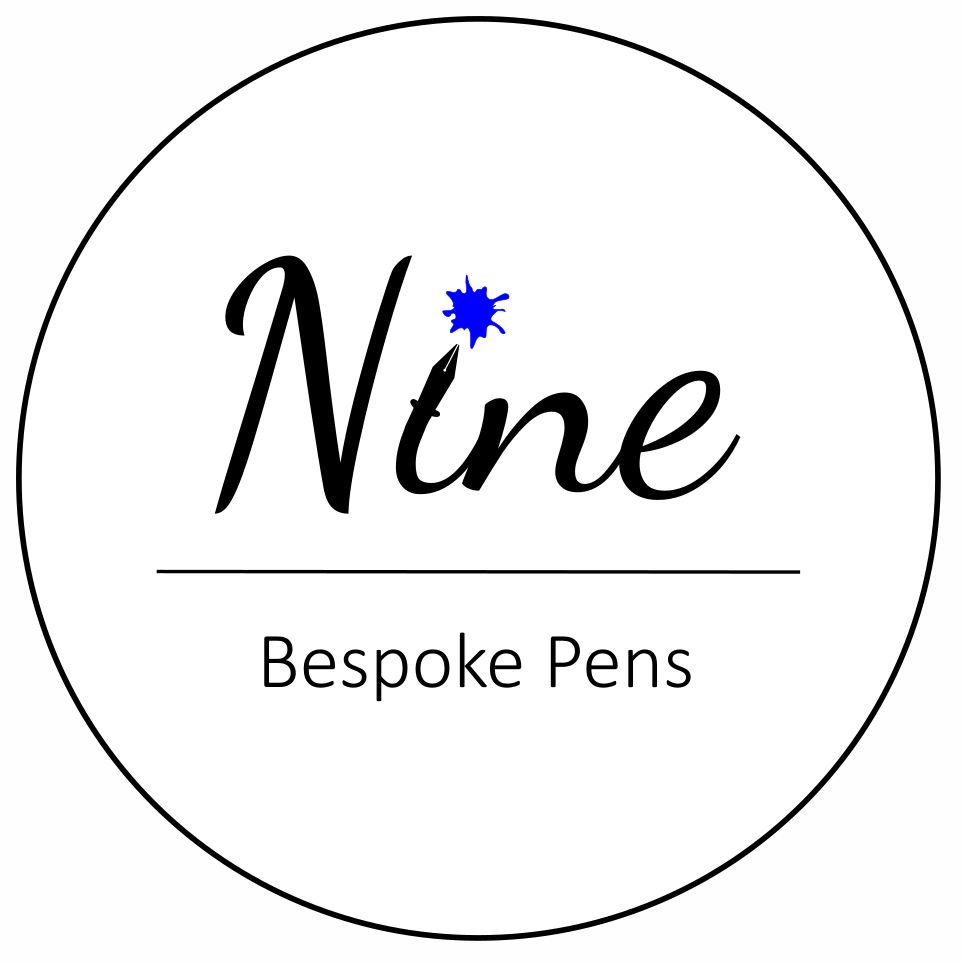So, just earlier this week I posted the first part of this guide which talked about converting from making kit pens to kit-less pens from a tool perspective. This particular post will focus on the materials and preparing your stock.
Picking a blank
Choosing a blank is the first step in your pen making journey. For this guide we will focus on creating our pen with just 1 material, rather than combining materials and adding features or finials.
There are hundreds or viable options for kit-less pens! Let’s explore this:
Material type
- Acrylics are a sturdy robust option that comes in a range of colours and patterns. This turns threads well, is tough and can polish up to very deep shine. These are available at many retailers and I have used The Turners Workshop / Beaufort Ink / Axminster Tools




- Resin are in plentiful supply, behave very differently from acrylic but in their own way are equally as good as acrylic. When turning the material powders but threads and shines beautifully. Some suppliers I have had the pleasure of using are: Carolina Pen Company / McKenzie Pen Works / Stormwind’s Blanks and Scales / UK Pen Blanks and Moulds / Turnt Pen Co / The Pensmiths
- It is worth bearing in mind there are different types of resin. However, I am no expert. Typically kit-less pen resins are made with Urethane. I think Polyester resins are too brittle to thread…




- Cellulose Acetate blanks are rarer but available still. I have only bought through The Turners Workshop. These feel warmer in the hand and are a bit softer to turn compared to acrylic or resin.


Cutting to Length
The next important aspect is to determine the desired length of your pen. You may want to determine this, refine it and stick to forever more. I however use measurements as a guide and don’t get too caught up with repeatability, but that’s just me!
Starting with the barrel
I aim for around 80 – 85mm in length. From a technical aspect, you will need to consider what ink filling system you will be using; the thread type for barrel to cap tenon and the length of the section.
At this point, until you have finished your barrel, I would not continue cutting stock lengths.
Continue with the section
When you are happy with the barrel, you can measure out your section length. I aim for 35 – 40mm which includes the tenon that will screw into the barrel. The nib housing’s threads are typically at the bottom of the housing, which means the section length should be at least the length of the nib housing. I often increase the length too so that the nib housing screws most of the way through the section and not all the way through. This means if I am using a converter, it will need to fit inside the section tenon to connect with the nib housing.
Here you must remember that when your converter is fitted to the nib in the section, will it fully screw into the barrel with enough clearance in length.

If your section is quite short, you won’t be providing much support for the cartridge. While I don’t think this is a major problem, I personally think this is an advantageous way of ensuring the cartridge stays put throughout any rough and tumble your poor pen may experience!

You will also note that if the section grip is too short, the user’s fingers could well be sitting on the barrel to cap threads, and this could be uncomfortable. #sadface.

A way of providing the further support for the cartridge, is making sure you only drill out the correct void in the barrel, so that the cartridge is snug and not loose within. You will need to consider the weight VS cartridge security though.
Did you think this would be simple?
Finish with the cap
When you have completed your barrel and fitted your section, NOW you can think about your cap size! This is easy! 🙂
Measure from the bottom of the barrel threads, right up until the top of the nib in the section; add on a bunch of millimetres for the top of the cap and you now have a cap length.
Why do we do the cap last?
Because if you have cut your cap first, you have a defined criteria that your nib and section MUST fit into.
What’s next?
I have now provided you with some things to think about:
– You have your tool list
– You have an idea on what material you should buy, and where from
– You now can start playing with a ruler or calliper to think about material lengths.
Now order another one of those blanks because you realised a 150mm blank may be a little too small to make a 150mm long pen!! 😉
Come back soon and I will talk to you about threading!
